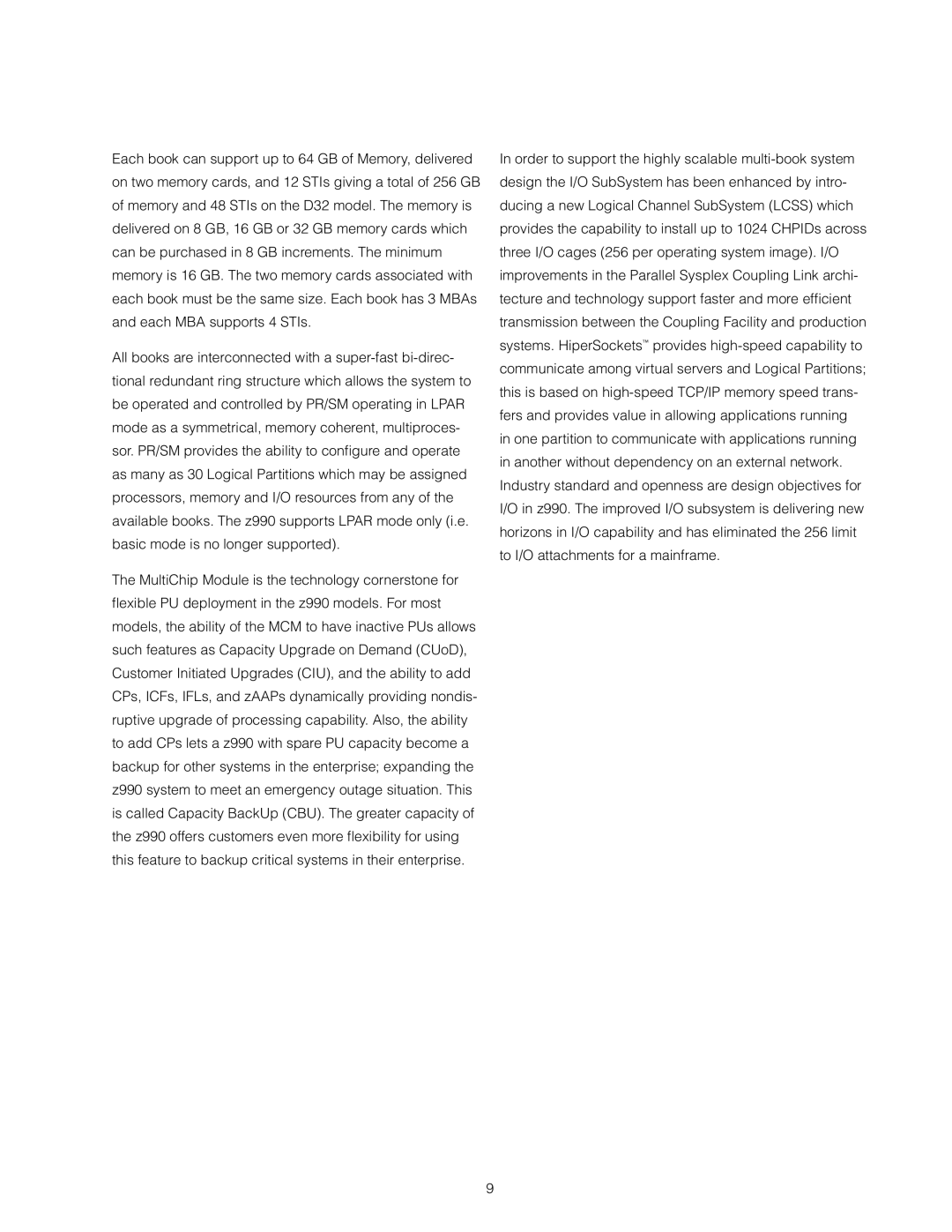Each book can support up to 64 GB of Memory, delivered on two memory cards, and 12 STIs giving a total of 256 GB of memory and 48 STIs on the D32 model. The memory is delivered on 8 GB, 16 GB or 32 GB memory cards which can be purchased in 8 GB increments. The minimum memory is 16 GB. The two memory cards associated with each book must be the same size. Each book has 3 MBAs and each MBA supports 4 STIs.
All books are interconnected with a
The MultiChip Module is the technology cornerstone for
flexible PU deployment in the z990 models. For most models, the ability of the MCM to have inactive PUs allows such features as Capacity Upgrade on Demand (CUoD), Customer Initiated Upgrades (CIU), and the ability to add CPs, ICFs, IFLs, and zAAPs dynamically providing nondis- ruptive upgrade of processing capability. Also, the ability to add CPs lets a z990 with spare PU capacity become a backup for other systems in the enterprise; expanding the z990 system to meet an emergency outage situation. This is called Capacity BackUp (CBU). The greater capacity of the z990 offers customers even more fl exibility for using this feature to backup critical systems in their enterprise.
In order to support the highly scalable
9
